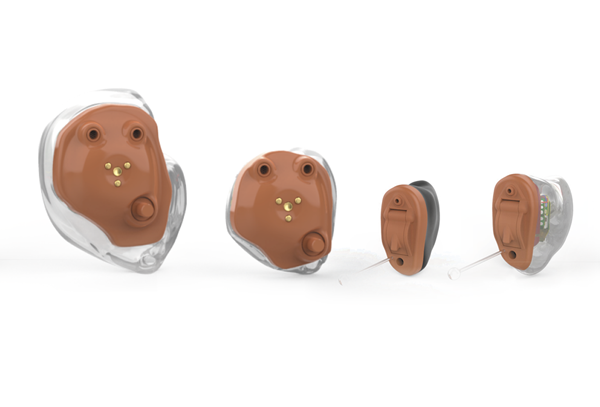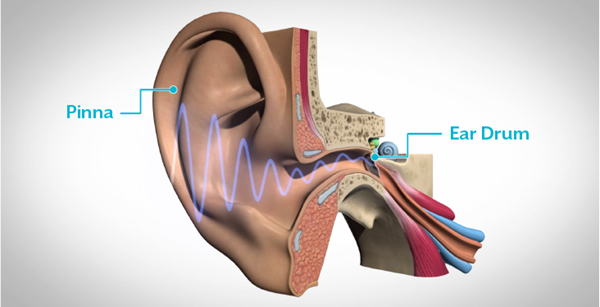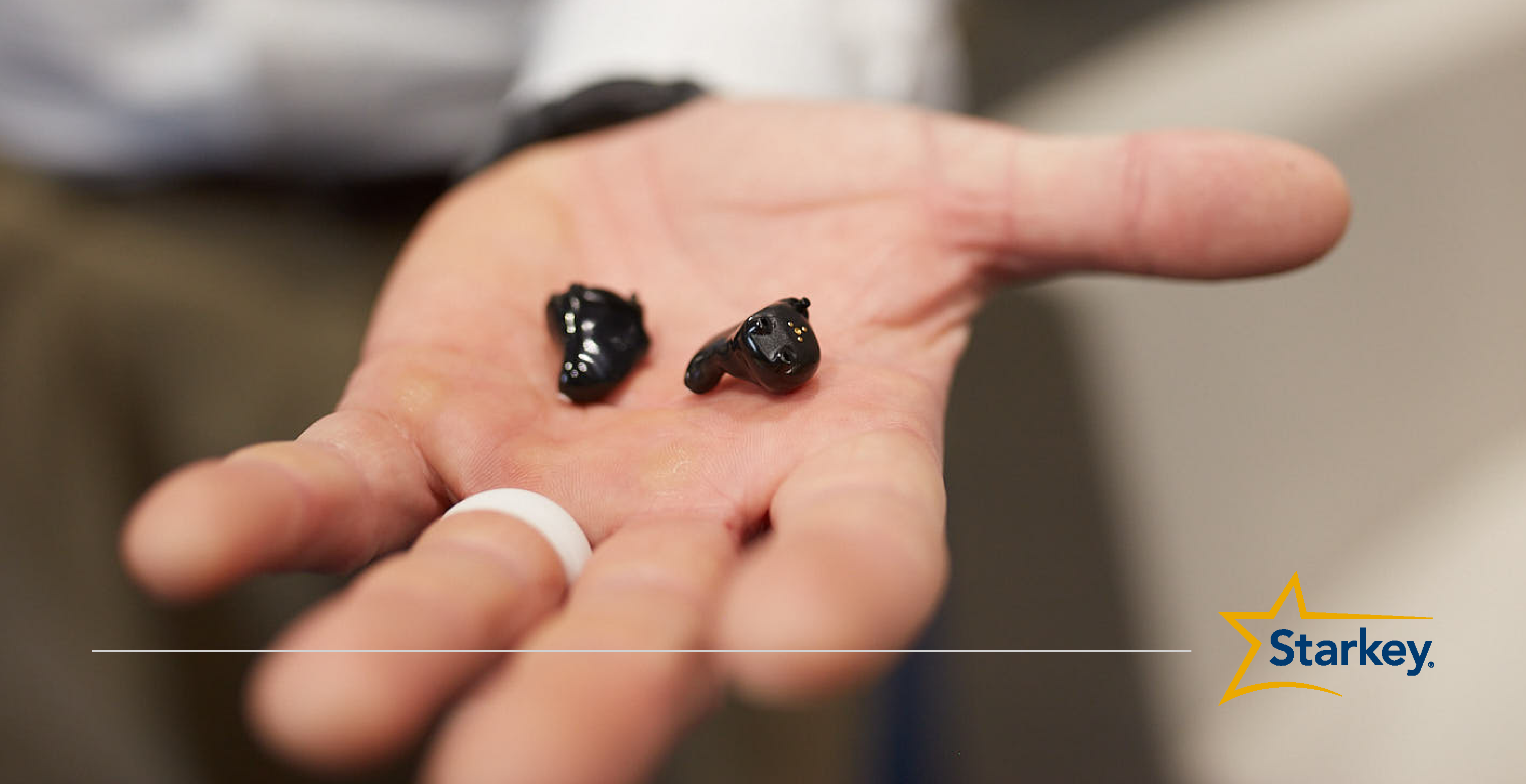When you think of a hearing aid, what image enters your mind? Something like this, right?
.jpeg?h=272&w=600&la=en-CA&hash=341B1FA5AFC481B669700F56D76CD9808A1A9F4B)
That’s no surprise at all. It’s probably what you’d see if you searched Google for “hearing aid”. It actually is the shape of a “standard” hearing aid, and these account for 8 of every 10 hearing aids fit.
The things that you probably won’t see (which is exactly why it didn’t come to mind) are “custom” hearing aids. The reason? Custom hearing aids are molded and fit to each person’s unique ear shape, so they tend to have a very interesting shape.

Custom hearing aid advantages
We urge you to look past their shape and you will see that custom hearing aids have so many advantages. Let’s take a look at a few of those advantages now.
They’re called custom for a reason
Like snowflakes, no two people are exactly alike. Similarly, no two sets of ears or hearing needs are the same. Custom hearing aids were and are engineered to take advantage of that.
Each one is molded and made to fit the wearer’s unique ear anatomy. Your hearing professional will make a quick, painless earmold while you’re in the office. They then provide that mold to the manufacturer, where the hearing aid shell and all of the components are precisely made to your custom specifications.
The result is hearing aids that fit better and more snug than standard hearing aids — and a hearing solution that is personalized and tailor made just for you, literally from the inside out.
Custom hearing aids can produce a more natural sound
Two features of custom hearing aids help them deliver a more natural sound to their wearers.
The first important feature is the proximity of the hearing aid receiver to your eardrum. Because custom hearing aids like the Completely-in-Canal (CIC) and Invisible-in-Canal (IIC) rest deeper in the ear canal than other hearing aids, their receiver is closer to the eardrum or tympanic membrane, which is the part of the ear responsible for sending sound waves to the inner ear. This placement helps deliver superior sound quality at a lower overall volume.

The other is that, unlike standard hearing aids, whose microphones sit and “collect” sounds from behind the ear, the microphone of custom hearing aids actually sit inside the ear itself. This allows them to take advantage of your ear’s pinna (the external part of the ear) to first “funnel” sounds to the microphone - using the ear’s natural process. The results? It makes it much easier for you to tell where sounds are coming from, and high-frequency sounds can be heard much more naturally.
Better in wind
Your pinna also helps shield against wind noise — and the placement of custom hearing aids takes advantage of that too. Because the hearing aid microphone rests in the ear rather than behind it, it’s more guarded from wind and you’re less likely to hear the wind noise.
Easy to put in and take out
Standard hearing aids have two parts that need to be “put on” — the part that is placed behind the ear, and the part that goes inside the ear — custom hearing aids are actually just one piece and go in and out of your ear with ease. And because they’re custom molded to your ear’s individual unique contours, they fit snug and sound.
Custom hearing aids: The merging of art and science
At Starkey, we’re known for our industry-leading custom artistry and the industry’s first custom rechargeable hearing aids. Custom hearing aids represent the pinnacle of hearing aid science combined with the personal care and prescriptive treatment plan that only an experienced hearing healthcare professional can provide.
If you are an individual who wants a personalized hearing solution, completely designed for your specific ear(s) and hearing capability, just ask about custom hearing aids. To find a hearing professional in your area who can fit them for you, call (888) 919-6824 or click here.
